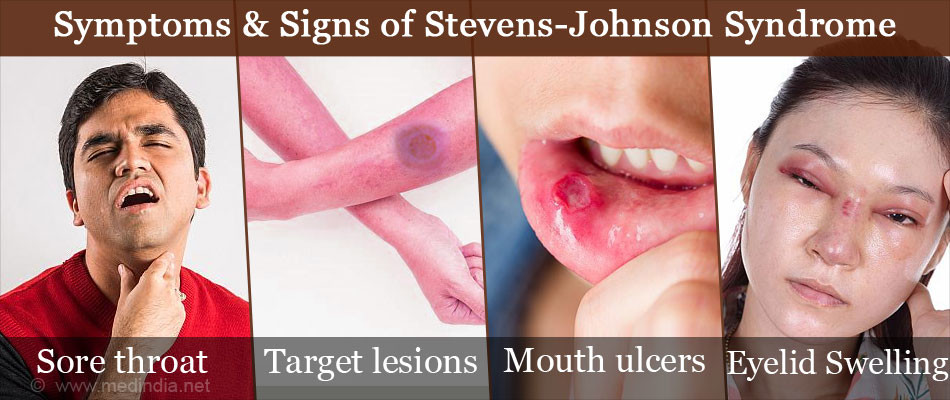
🤕Stevens-Johnson Syndrome: What is it?🤔
🏥Information from Mayo Clinic.
📅Published on 9th March 2018.
😷Stevens-Johnson syndrome (SJS) is a rare, serious disorder of your skin and mucous membranes. It's usually a reaction to a medication or an infection. Often, it begins with flu-like symptoms, followed by a painful red or purplish rash that spreads and blisters. Then the top layer of the affected skin dies, sheds and then heals.
Stevens-Johnson syndrome is a medical emergency that usually requires hospitalization. Treatment focuses on eliminating the underlying cause, controlling symptoms and minimizing complications as your skin regrows.
Recovery after Stevens-Johnson syndrome can take weeks to months, depending on the severity of your condition. If it was caused by a medication, you'll need to permanently avoid that drug and others closely related to it.
🤒Symptoms:
Stevens-Johnson syndrome signs and symptoms include:
- Fever.
- Unexplained widespread skin pain.
- A red or purple skin rash that spreads.
- Blisters on your skin and the mucous membranes of your mouth, nose, eyes and genitals.
- Shedding of your skin within days after blisters form.
If you have Stevens-Johnson syndrome, several days before the rash develops you may experience:
- Fever.
- Sore mouth and throat.
- Fatigue.
- Cough.
- Burning eyes.
😷When to see a doctor:
Stevens-Johnson syndrome requires immediate medical attention. Seek emergency medical care if you experience signs and symptoms of this condition. Stevens-Johnson syndrome treatment requires hospitalization, often in an intensive care unit or a burn unit.
💊Stopping nonessential medications:
The first most important step in treating SJS is to discontinue any medications that may be causing it. It's difficult to determine exactly which drug may be causing the problem, your doctor may recommend stopping all nonessential medications.
🔬Diagnosis:
Tests and procedures used to diagnose Stevens-Johnson syndrome include:
- Physical exam. Doctors often can identify Stevens-Johnson syndrome based on your medical history and a physical exam.
- Skin biopsy. To confirm the diagnosis, and rule out other possible causes, your doctor may remove a sample of skin for laboratory testing (biopsy).
- Culture. Skin or oral culture or culture from other areas may be taken to confirm or rule out infection.
- Imaging. Depending on your symptoms, your doctor may have you undergo a chest X-ray to check for pneumonia.
- Blood tests. These are used to confirm infection or other possible causes.
💉Medication and therapy causes:
Stevens-Johnson syndrome is a rare and unpredictable reaction. Your doctor may not be able to identify its exact cause, but usually the condition is triggered by a medication or an infection. A reaction to medication may start while you're using it or up to two weeks after you've stopped using it.
Drugs that can cause Stevens-Johnson syndrome include:
- Anti-gout medications, such as allopurinol.
- Medications to treat seizures and mental illness (anticonvulsants and antipsychotics), with added risk if you also undergo radiation therapy;
- Pain relievers, such as acetaminophen (Tylenol, others), ibuprofen (Advil, Motrin IB, others) and naproxen sodium (Aleve).
- Medications to fight infection, such as penicillin.
🤢Infectious causes:
Infections that can cause Stevens-Johnson syndrome include:
🚑Prevention:
Consider genetic testing before taking certain drugs. If you are of Chinese, Southeast Asian or Indian descent, talk with your doctor before taking carbamazepine (Carbatrol, Tegretol). This drug is useful to treat epilepsy, bipolar disorder and other conditions. But people with a gene called HLA-B*1502 have an increased risk of Stevens-Johnson syndrome if they take this drug.
🎓For more information including the full article from Mayo Clinic please use the links below:
🌐 www.mayoclinic.org/diseases-conditions/stevens-johnson-syndrome/symptoms-causes/syc-20355936
🌐 www.gstatic.com/healthricherkp/pdf/stevens_johnson_syndrome_en_AU.pdf
🌐 www.nhs.uk/conditions/stevens-johnson-syndrome/
🌐 https://rarediseases.info.nih.gov/diseases/7700/stevens-johnson-syndromesjsupport.org/






